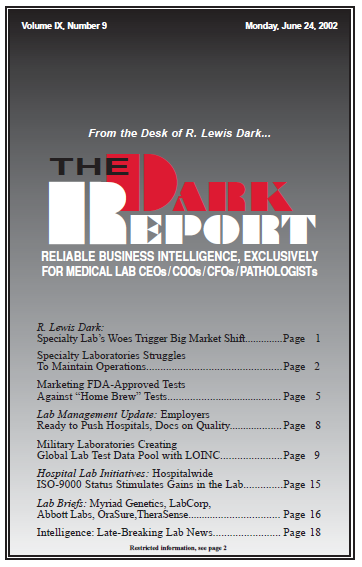CEO SUMMARY: In past years, it was customary for laboratories to shift away from performing or ordering “home brew” tests in favor of FDA-approved test kits as they became available. However, new marketing models for diagnostic testing are shifting this long-standing practice. HIV resistance testing is one type of testing where this battle between “home …
Marketing Approved Kits Against “Home Brews” Read More »
To access this post, you must purchase The Dark Report.


